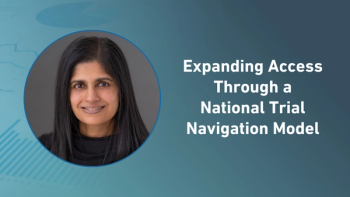
- Applied Clinical Trials-04-01-2021
- Volume 30
- Issue 4
Turnover for Clinical Monitoring Remains High
New BDO CRO Insights Report reveals high rate of CRA turnover and what organizations are doing to combat it.
BDO recently released its annual
For this most recent edition of the report, the main headline continues to be a high rate of employee turnover within CROs, particularly for the CRA role. As shown in Figure 1 below, the average turnover in the US for clinical monitoring from 2015 to 2019 has been consistently high. Judy Canavan, Managing Director, Global Employer Services of BDO said, “The sense that [CRAs] can own their career is important, and organizations are really not enabling employees to do that.”
One influencer of CRA turnover in the US has been compensation levels. BDO found that companies’ approaches to compensation levels have remained mostly the same the last 10 years. The salary increase budgets of CROs in the US have only been around 3% or less. “The market rates of pay have been moving more slowly than one would expect given the demand for talent,” said Canavan. “This is a problem because there’s this huge demand for talent, but on average, the pay for a CRA-level one is only going up a little bit each year.”
Unsurprisingly, CRAs view switching companies as their best career choice. “Their (CRAs) value goes up faster than their salary value if they just stay within the firm,” said Canavan.
At the same time, CROs are finding ways to combat turnover. Canavan explained that companies are creating a wide variety of retention programs which can include compensation plans and merit-based rewards. She mentioned one organization in particular created competency-based career ladders. “This gave the employees a clear, defined path upward,” she said. “The employees actually felt like they owned their careers, and they (the organization) really did document a significant drop in turnover.”
In terms of how COVID-19 has affected CRA turnover, Canavan said it is a growing concern. She explained that things settled down mid-2020, but shortly after, companies were calling her with concerns about employees suddenly leaving for higher salaries. From a BDO-sponsored poll of 15 CROs year-to-date, US turnover was over 21% as of early November 2020.
The CRA role in of itself has also been changed by the pandemic. Kimberly Ray, consultant and working group leader, ACRP, said travel bans forced the role to become more virtual; field CRAs needed to learn how to use new technologies for analyzing data electronically as well as advising site staff to ensure trial operations continued.
While turnover remains high and decentralized trials (DCTs) continue to evolve, CRAs can be confident in their own job security during the pandemic. “Whether a DCT or not, more and more technology is being leveraged in clinical research. Therefore, the CRA role will continue to be needed but it will evolve,” said Ray.
The ACRP Working Group sees the field and in-house CRA roles merging to create a position that works with sites on different levels. “CRAs will be key in helping sites embrace change and navigating this new environment,” said Ray. “They will also likely be the first call when there are technology questions or issues.”
It’s not only at the site that Ray says CRAs’ roles will change in the age of DCTs. One new role needed for DCTs is a “virtual patient guide.” The CRA in this position will be responsible for guiding the patient through a trial via a virtual platform; they are the primary point of contact for the patient.
Looking forward, while CRA turnover continues to be affected by the pandemic, there is hope that the emergence of DCTs can curb some of the contributing factors.
Andy Studna is an Assistant Editor for Applied Clinical Trials. He can be reached at
Articles in this issue
over 4 years ago
Europe's Eternal Struggle with Safety and Innovationover 4 years ago
How Did Clinical Trials Move at the Speed of COVID?over 4 years ago
Applied Clinical Trials April 2021 Issue (PDF)over 4 years ago
Using Real-World Data in Patient Recruitmentover 4 years ago
Revamping Site Feasibility as Trials Become Decentralizedover 4 years ago
Providing Greater Opportunity for Undersized CROsalmost 5 years ago
FDA Reviews Gains, Risks of Accelerated Approval Processalmost 5 years ago
De-Risking Trials with Science-Driven Oversightalmost 5 years ago
Personalized Medicine Yet Again Expecting a European BoostNewsletter
Stay current in clinical research with Applied Clinical Trials, providing expert insights, regulatory updates, and practical strategies for successful clinical trial design and execution.




